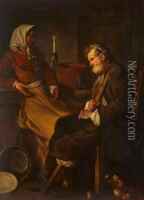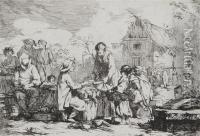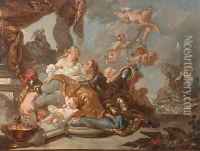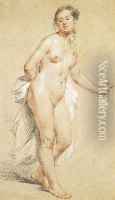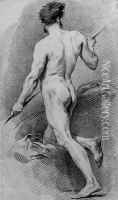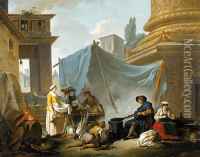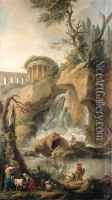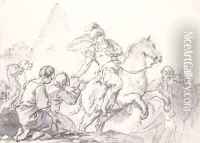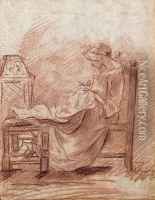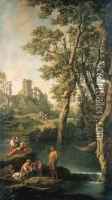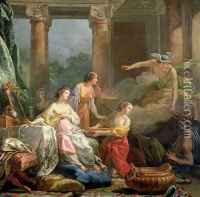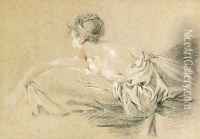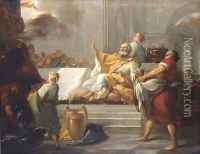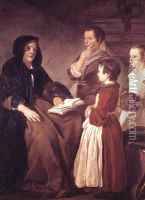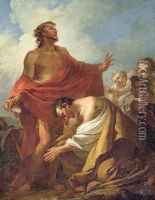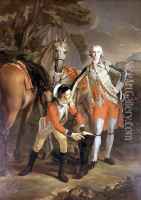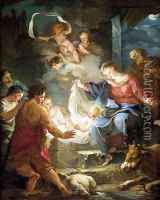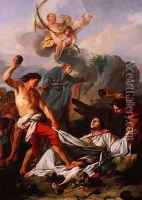Jean-Baptiste-Marie Pierre Paintings
Jean-Baptiste-Marie Pierre, also known as Pierre the Elder, was a prominent French painter, draughtsman, and administrator during the 18th century. He was born on March 6, 1714 in Paris, France. Pierre was well-known for his classical and history paintings, and he was greatly influenced by the works of great masters such as Raphael and Poussin. He is often associated with the Rococo style, although his work also transitioned into the more disciplined Neoclassical style, which became popular towards the end of his career.
Pierre received his initial training from his father, who was a painter as well, and later from the painter Jean-François de Troy. He won the prestigious Prix de Rome in 1734, which allowed him to study at the French Academy in Rome from 1735 to 1740. During his time in Rome, Pierre was heavily influenced by the works of the Italian masters and the ancient Roman art that he studied.
Upon his return to France, Pierre became a member of the Royal Academy of Painting and Sculpture in 1742 and was appointed as a professor there in 1745. His reputation continued to grow, and in 1770, he succeeded François Boucher as the Premier peintre du Roi (First Painter to the King), serving King Louis XV and later King Louis XVI. This prestigious position solidified his status as one of the leading artists in France.
Throughout his career, Pierre was also involved in various administrative roles within the art world. He was a strong advocate for the French classical tradition in art and argued against the Rococo style, which he felt was frivolous. This stance put him in opposition to some of his contemporaries. He played a significant role in the establishment of the École Royale des Élèves Protégés (Royal School for Protected Students), which was designed to prepare the most talented artists of the generation for the competition for the Prix de Rome.
Jean-Baptiste-Marie Pierre's notable works include 'The Abduction of Helen', 'The Continence of Scipio', and 'The Death of Socrates'. His paintings were characterized by their grandeur, clear composition, and strong use of color, which were all hallmarks of the French classical tradition.
Pierre's influence extended beyond his lifetime, as he was an important teacher who trained a number of significant artists of the next generation. Despite the political turmoil of his later years, including the French Revolution, which began the same year as his death, Pierre's legacy as an artist and teacher remained intact. Jean-Baptiste-Marie Pierre passed away on May 15, 1789, in Paris, just before the upheavals that would transform France and its artistic community.
